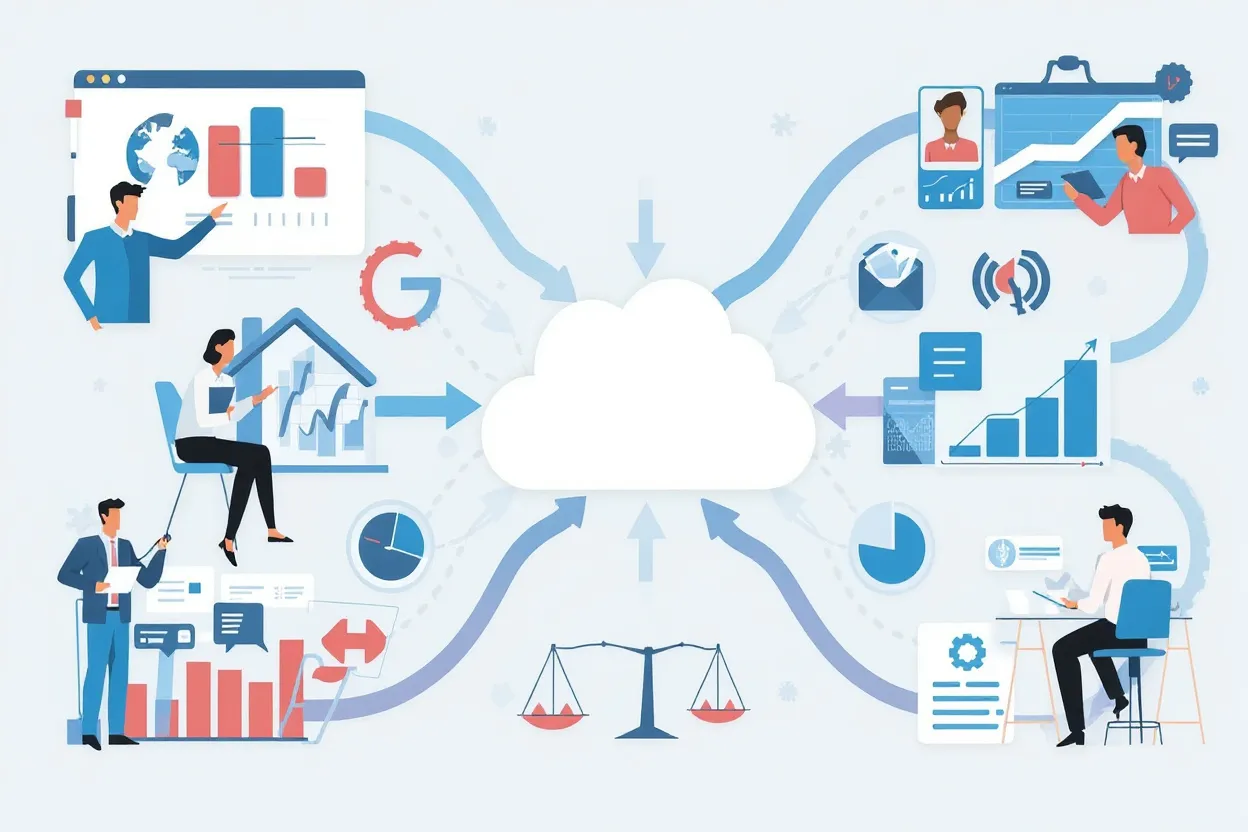
Technical due diligence red flags every investor should know
Avoid costly technical surprises in your startup investments. Learn the critical red flags and warning signs that experienced investors look for during technical due diligence, with practical frameworks for evaluating engineering teams, architecture decisions, and technical debt risks.
I’ve seen investors lose millions because they missed critical technical red flags during due diligence. The startup had great metrics, a compelling pitch, and an impressive team. But underneath the surface, their technical foundation was built on quicksand.
Six months after the Series A, they had to rebuild their entire platform from scratch. The company survived, but barely. The investors who did proper technical due diligence saw the warning signs and passed.
Technical due diligence isn’t just about code quality - it’s about understanding technical risk and its impact on business outcomes. Here are the red flags that should make every investor pause and dig deeper.
The cost of missing technical red flags
Most investors approach technical due diligence backward. They focus on impressive technology demos and engineering team credentials, but miss the systemic issues that create existential risk.
Case study: The hero engineer problem
I was brought in to evaluate a Series A candidate in the fintech space. Their demo was flawless, their metrics were strong, and they had paying enterprise customers. But during technical interviews, I discovered a critical problem.
Their entire platform depended on a single senior engineer who had been with the company since day one. He had built every core system, knew every integration detail, and was the only person who could deploy new features.
When I asked about documentation, the answer was “it’s all in John’s head.” When I asked about backup plans if John left, they admitted they’d never considered it. John was planning to leave for a FAANG company within six months.
The investors passed. Three months later, John gave notice. The company spent the next eight months in crisis mode, rebuilding systems and documentation while their competitors gained market share.
The hidden technical debt crisis
Another startup I evaluated had impressive user growth but was hemorrhaging engineering productivity. Their development team had grown from 3 to 15 engineers, but feature delivery had actually slowed down.
The root cause? They had accumulated massive technical debt in their rush to market. Simple changes required modifications to dozens of files. Their test suite took four hours to run. Database queries were failing under load.
The founders knew they had “some technical debt” but estimated two months to clean it up. My analysis showed it would take 12-18 months of dedicated work just to get to a maintainable state.
The math was brutal: either slow down feature development by 70% to pay down debt, or face a complete platform rewrite within 12 months. Neither option supported their aggressive growth projections.
Critical red flags that kill deals
Based on evaluating hundreds of startups, here are the red flags that should immediately trigger deeper investigation:
System architecture red flags
Single points of failure:
- Core functionality depends on individual knowledge or access
- No redundancy in critical systems or data storage
- Third-party dependencies without backup plans
- Manual processes that can’t be automated or scaled
Scalability time bombs:
- Database queries that fail under load
- Architecture that requires complete rebuilds to scale
- Hard-coded limits that constrain growth
- Resource usage that grows exponentially with users
Security vulnerabilities:
- Customer data stored without encryption
- No access controls or audit trails
- Third-party integrations without security review
- Authentication systems that don’t meet industry standards
Team and process red flags
Knowledge concentration:
- Critical systems understood by only one person
- No documentation for core business logic
- Deployment processes that require specific individuals
- Integration knowledge that isn’t shared across the team
Development practices:
- No automated testing or quality controls
- No code review processes
- Manual deployment processes
- No monitoring or error tracking systems
Technical decision-making:
- Architecture decisions made without clear reasoning
- Technology choices that don’t align with team capabilities
- No process for evaluating technical trade-offs
- Decisions driven by personal preferences rather than business needs
Coaching for Tech Leads & CTOs
Ongoing 1:1 coaching for startup leaders who want accountability, proven frameworks, and a partner to help them succeed under pressure.
The technical due diligence framework
Here’s the systematic approach I use to evaluate technical risk:
Phase 1: High-level assessment (2-4 hours)
System overview:
- Request architecture diagrams and system documentation
- Understand data flow and integration patterns
- Identify core business logic and critical paths
- Review technology stack and infrastructure decisions
Team evaluation:
- Engineering team size and structure
- Key personnel and their responsibilities
- Recent departures and hiring challenges
- Technical leadership and decision-making processes
Development practices:
- Code review and quality control processes
- Testing coverage and automated validation
- Deployment and release management
- Monitoring and incident response procedures
Phase 2: Deep technical review (1-2 days)
Code quality assessment:
- Review representative code samples across key systems
- Evaluate testing coverage and quality
- Assess documentation and code organization
- Check for security best practices and compliance
Infrastructure and operations:
- Review deployment and hosting architecture
- Evaluate monitoring, logging, and error tracking
- Assess backup and disaster recovery plans
- Review security practices and compliance measures
Scalability analysis:
- Load testing results and performance characteristics
- Database optimization and query performance
- Caching strategies and content delivery
- Resource usage patterns and scaling costs
Phase 3: Risk assessment and recommendations (4-8 hours)
Technical debt quantification:
- Estimate effort required to address major issues
- Prioritize risks by business impact and likelihood
- Project timeline and resource requirements for improvements
- Calculate impact on development velocity and hiring needs
Business impact analysis:
- How technical limitations affect growth potential
- Timeline risks for product roadmap delivery
- Competitive disadvantages from technical constraints
- Regulatory or compliance risks that create liability
Evaluating the engineering team
The team behind the technology is often more important than the current state of the code:
Leadership assessment
Technical leadership capability:
- Does the CTO or tech lead have relevant experience at scale?
- Can they articulate technical trade-offs and decisions clearly?
- Do they understand the business implications of technical choices?
- Have they built similar systems successfully before?
Decision-making processes:
- How are technical decisions made and documented?
- Who has input on architecture and technology choices?
- How do they balance technical perfection with business needs?
- Do they have processes for evaluating and managing technical debt?
Team capability and culture
Skill distribution:
- Are critical skills concentrated in too few people?
- Does the team have depth in their chosen technology stack?
- Can they handle the technical challenges of their growth projections?
- Are there obvious skill gaps that would require expensive hiring?
Engineering culture:
- Do they prioritize code quality and maintainability?
- How do they handle technical disagreements and trade-offs?
- Are they proactive about addressing technical debt?
- Do they have a culture of documentation and knowledge sharing?
Hiring and retention:
- Can they attract and retain quality engineers?
- What’s their track record with engineering hires?
- Are there any obvious retention risks or team stability issues?
- How do they onboard new engineers and transfer knowledge?
Got a leadership question?
Share your toughest challenge and I might feature it in an upcoming episode. It's free, anonymous, and you'll get extra resources in return.
Security and compliance evaluation
Security issues can create existential business risk, especially for companies handling sensitive data:
Data protection assessment
Data handling practices:
- How is customer data stored, processed, and transmitted?
- Are appropriate encryption standards used throughout?
- Who has access to production data and systems?
- Are there audit trails for data access and modifications?
Access control systems:
- How are user permissions managed and audited?
- Are there appropriate role-based access controls?
- How are API keys and secrets managed securely?
- What happens when employees leave the company?
Compliance readiness:
- Do they meet relevant regulatory requirements (GDPR, HIPAA, SOC 2)?
- Have they undergone security audits or penetration testing?
- Do they have incident response and breach notification procedures?
- Are they prepared for enterprise customer security requirements?
Infrastructure security
Network and system security:
- Are systems properly configured and hardened?
- Do they use appropriate firewalls and network segmentation?
- Are security updates applied regularly and systematically?
- Do they have intrusion detection and monitoring systems?
Development security:
- Are there security reviews for code changes?
- Do they scan for vulnerabilities in dependencies?
- Are secrets and credentials managed securely in code?
- Do they have secure development and deployment pipelines?
Financial and operational technical risks
Technical decisions have direct financial implications that investors need to understand:
Operational cost analysis
Infrastructure costs:
- How do hosting and infrastructure costs scale with usage?
- Are there inefficiencies that create unnecessary expenses?
- Do they have visibility into cost drivers and optimization opportunities?
- How do their costs compare to industry benchmarks?
Development efficiency:
- How long does it take to implement and deploy new features?
- What percentage of engineering time goes to maintenance vs new development?
- How do technical debt and system complexity affect productivity?
- What are the true costs of their current technical choices?
Vendor and dependency risks
Third-party dependencies:
- Are they heavily dependent on specific vendors or services?
- What happens if key vendors change pricing or shut down?
- Do they have adequate vendor relationship management?
- Are there single points of failure in their vendor stack?
Technology lifecycle:
- Are they using technologies with strong long-term support?
- How do they handle upgrades and technology evolution?
- Are there risks from deprecated or end-of-life technologies?
- Do they have plans for major technology transitions?
Industry-specific red flags
Different industries have unique technical risk patterns:
Fintech and financial services
Regulatory compliance:
- PCI DSS compliance for payment processing
- Financial data encryption and audit requirements
- Anti-money laundering (AML) and know-your-customer (KYC) systems
- Banking partnership technical requirements
Performance and reliability:
- Transaction processing speed and reliability
- Financial calculation accuracy and audit trails
- Disaster recovery and business continuity planning
- Integration complexity with financial institutions
Healthcare and biotech
Data privacy and security:
- HIPAA compliance and protected health information (PHI)
- Patient data encryption and access controls
- Medical device integration security
- Clinical trial data integrity and audit requirements
Regulatory and validation:
- FDA validation requirements for medical software
- Clinical workflow integration complexity
- Electronic health record (EHR) integration capabilities
- Quality management system implementation
E-commerce and retail
Performance at scale:
- Website performance under traffic spikes
- Inventory management system scalability
- Payment processing reliability and security
- Order fulfillment and logistics integration
Data and analytics:
- Customer data platform capabilities
- Recommendation engine effectiveness
- Fraud detection and prevention systems
- Multi-channel integration complexity
Making the investment decision
Technical due diligence should inform investment decisions, not dictate them. Here’s how to integrate technical findings:
Risk vs opportunity assessment
Acceptable risk levels:
- Technical issues that can be resolved with reasonable investment
- Problems that don’t affect core business functionality
- Risks that are well-understood and manageable
- Technical debt that’s acknowledged and being addressed
Deal-breaking risks:
- Security vulnerabilities that create legal liability
- Scalability limitations that prevent growth
- Technical dependencies that threaten business continuity
- Team risks that can’t be mitigated through hiring or processes
Investment structure considerations
Technical milestone requirements:
- Include specific technical improvements in funding tranches
- Require security audits and compliance certifications
- Set performance and reliability benchmarks
- Mandate documentation and knowledge transfer initiatives
Board oversight and support:
- Add technical advisors to the board or advisory team
- Provide access to experienced CTOs and technical leaders
- Connect portfolio companies for knowledge sharing
- Invest in technical training and best practices
Facing a leadership challenge right now?
Don't wait for the next fire to burn you out. In a 30-minute discovery call we'll map your blockers and outline next steps you can use immediately with your team.
Building ongoing technical oversight
Technical due diligence shouldn’t end at investment. Establish ongoing monitoring and support:
Regular technical health checks
Quarterly technical reviews:
- Track progress on identified technical debt
- Monitor key performance and reliability metrics
- Review hiring and team development progress
- Assess new technical risks and opportunities
Annual deep dives:
- Comprehensive security and compliance audits
- Architecture review for scaling requirements
- Competitive technology analysis
- Technical roadmap alignment with business goals
Portfolio support strategies
Shared resources:
- Technical advisory networks and expert consultants
- Best practices documentation and templates
- Security and compliance service providers
- Recruiting and hiring support for technical roles
Knowledge sharing:
- CTO forums and peer learning groups
- Technical workshop and training programs
- Security and compliance knowledge sharing
- Architecture review and feedback processes
Remember, the goal isn’t to find perfect code - it’s to understand whether the technical foundation can support the business vision. Some technical debt is acceptable and even expected in early-stage companies. The key is ensuring that technical risks are identified, understood, and manageable within the context of the business opportunity.
Great technical due diligence protects your investment by ensuring that technical challenges won’t prevent the company from executing on its business strategy and achieving the growth milestones needed for successful exits.
📈 Join 2,000+ Tech Leaders
Get my weekly leadership insights delivered every Tuesday. Team scaling tactics, hiring frameworks, and real wins from the trenches.
Related Articles

Build vs buy: the technical decisions that make or break startups
Master the art of build vs buy decisions that determine your startup's technical trajectory. Learn the decision framework that successful CTOs use to balance development resources, time to market, and long-term flexibility with real case studies and actionable guidelines.

Managing technical risk during rapid growth: what keeps CTOs awake
Rapid business growth creates technical risks that can destroy companies overnight. After helping dozens of fast-growing startups navigate hypergrowth, here's how to identify, prioritize, and manage technical risk without killing momentum.

Why your best engineer makes a terrible technical lead
Promoting your strongest individual contributor to technical lead often backfires spectacularly. Here's why technical excellence doesn't predict leadership success, and how to identify engineers who can actually lead teams effectively.
